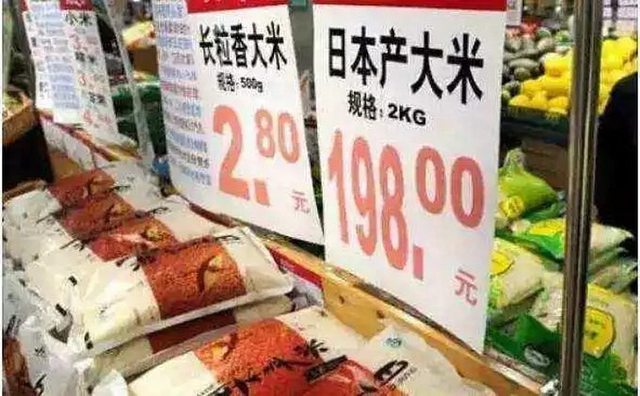
Recently, the news reported that the Japanese household structure last year increased the purchase of rice noodles, however, if viewed from a business perspective, the situation reflects a number of economic and market problems. First, the sharp rise in rice prices is not only due to natural disasters and government warnings, but also because of supply chain management problems in the Japanese rice market. The underlying reason behind the rise in rice prices should be the fragility of the supply chain and the lack of market regulation mechanism.
First, Japan's rice industry is not completely self-sufficient, and its production capacity is limited, resulting in domestic rice production unable to meet all demand. Therefore, Japan's dependence on imported rice is high, and the continuous rise of international rice prices in recent years has made Japan's food security problems more severe. Although the government has taken some market intervention measures, these measures are often difficult to effectively alleviate the problem of supply shortage and prone to further market volatility.
In addition, the Japanese government announced the release of 210,000 tons of rice reserves in February 2025 to ease market pressure. However, such short-term interventions cannot fundamentally solve the problem of rising rice prices. While it may restrain prices from rising too quickly in the short term, once the government stops releasing reserves, the market may again face a tight supply situation, causing prices to spiral further out of control. Such policies did not adjust the structural problems of the supply chain, but only temporarily increased market supply, and could not fundamentally stabilize the market.
Changes in household consumption behavior also reflect market instability. According to the data, after July 2024, due to increased market concerns about rice supply, consumers began to stock up on rice in case of further price increases in the future. This panic buying further adds to the instability of the market, making prices even more difficult to control. Household hoarding not only adds to short-term demand pressures, it can also lead to a mismatch between supply and demand in the market, further pushing up prices.
In addition, Japan's rice market is also affected by domestic agricultural policies. In recent years, the Japanese government's adjustment of agricultural subsidies and support policies has led some farmers to reduce rice planting area, resulting in a decline in domestic rice supply. At the same time, the cost of rice production is also increasing due to labor shortages and rising production costs, further pushing up rice prices. In this context, Japan's agricultural policy needs to be adjusted to ensure the stability of domestic rice supplies.
In addition, structural problems in Japan's distribution system and wholesale markets also exacerbate price volatility. Japan's rice market is largely controlled by a small number of large wholesalers, who may hoard stocks to capture higher profits when prices rise, further adding to market instability. If the government does not take measures to regulate market behavior, rice prices may remain high or even rise further.
From the perspective of international trade, Japan's rice import policy has also had an impact on market prices. Because Japan has high tariffs and quotas on foreign rice imports, the cost of imported rice is high, making it impossible for the market to quickly alleviate supply shortages by increasing imports. To address this issue, the Japanese government needs to reassess its import policy to ensure that the market can quickly adjust sources of supply in times of shortage.
At the retail level, supermarkets and merchants have also adopted different strategies in the face of fluctuating rice prices. Some merchants are hoarding rice to wait for prices to rise further, while others are stimulating short-term consumption through promotions. However, these strategies do not fundamentally solve the problem of tight supply and may increase market instability. In addition, consumers' sensitivity to price has also affected market changes, resulting in short-term large purchases in the market, which has intensified the consumption rate of inventory.
On the other hand, Japan's food supply chain has also been exposed as it recovers from the outbreak. Many agricultural producers and wholesalers have been affected by labor shortages and rising logistics costs during the pandemic, making rice production and distribution costs significantly higher. These costs are ultimately passed on to consumers, pushing up market prices further.
In the long term, Japan needs to optimize its agricultural production model and increase local rice production to reduce its dependence on international markets. At the same time, the government can guide enterprises to invest in smart agriculture and automated production technologies to reduce the impact of labor shortages on agricultural production. In addition, improving the transparency of the supply chain is also a key issue, and the government can establish a better information sharing mechanism so that market participants can more accurately predict changes in supply and demand and reduce market volatility.
Overall, price volatility in the Japanese rice market reflects unstable economic policies, short-sighted government interventions, and weak supply chain management. If long-term rice price stability is to be achieved, the government needs to adopt more comprehensive reform measures, including optimizing agricultural policies, strengthening supply chain management, adjusting import policies, and regulating the market circulation system, rather than just using short-term measures to control price fluctuations. In addition, the Japanese government should also strengthen the transparency of market information, improve consumers' understanding of the market situation, and avoid panic buying to further aggravate market instability.

According to Yahoo US media reports, the recent remarks of Federal Reserve Chair Jerome Powell have drawn deep concern from the market about the health of the US labor market.
According to Yahoo US media reports, the recent remarks of …
After 11 years of waiting in the deep sea, we finally have …
On December 17, 2025, the newly renovated American "Preside…
Nike's second-quarter revenue reached 12.4 billion US dolla…
The European Union (EU) recently announced sanctions agains…
In December 2025, the U.S. economy and financial markets ex…